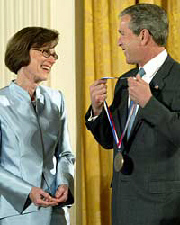“Being powerful is like being a lady. If you have to tell people you are, you aren’t.”
~ Margaret Thatcher
Chief People Officer partnering with CEOs/executives to help them WIN their next, ideal role
“Being powerful is like being a lady. If you have to tell people you are, you aren’t.”
~ Margaret Thatcher
Here it is, simple and real:
When you say something good to someone, DO NOT put in anything bad.
That’s it. That simple. When you’re saying good things, keep them good! That’s all. How simple is that?
It frustrates me to no end to hear…
… in the office, “What you did was superb, wonderful, but I just wish you did it all the time.”
…as a couple, “You really matter so much to me, and what you did by coming to my graduation instead of to that conference really matters. I don’t even mind it so much that you’ve missed my last two chamber performances. Thank you.”
…to a friend, “That outfit looks really good on you. And much better than that thing you wore to the charity gala, remember that?”
…with children, “You make me really proud of you. Two A+’s in one week, and a great note from your math teacher! You really should just straighten up in your room a little more.”
There is no high! There is no benefit when you mix the message. What am I saying? That the messenger should be killed? Well, no, ok, I’m not going that far. I’m just pointing out that good combined with bad is semi-good/semi-bad. Here’s the math:
1) good + good + good = good (three pieces of great news or three compliments… together the result is good)
2) bad + bad + bad = bad (three insults…together make a large insult)
3) good + bad = bad (good and bad… together that’s bad)
4) good + good + good + good + good + good + good + bad = bad (n number of good things and one bad thing … together the result is somewhat bad)
Why do I feel so strongly about this? Because the brain remembers bad things more easily than it remembers good things. In the fourth example, the brain overweights the bad. That’s just how brains work. It has to do with being on the lookout for danger in the caveman era. If you don’t see the dangerous animal once, you’re gone. If you don’t always observe the butterflies in the sunshine, you’re still ok, you live. Continue reading “Mixed Messages? Kill the Messenger!!”
“None of us will ever accomplish anything excellent or commanding except when he listens to this whisper which is heard by him alone.”
– Ralph Waldo Emerson
“Trust your hunches. They’re usually based on facts filed away just below the conscious level.”
– Joyce Brothers
The poet Amy Lowell was asked, “How are poems made?”
“I don’t know … I meet them where they touch consciousness and that is already a considerable distance along the road of evolution.”
– Amy Lowell
“Trust your own instinct. Your mistakes might as well be your own instead of someone else’s.”
– Billy Wilder, director of movies, including Some Like It Hot and Sabrina
This gym is a reason to climb in the Westchester and Stamford, CT area. If you were ever considering climbing, this gym is why you actually should. The Cliffs at Valhalla.

“People seem not to see,” says Emerson, “that their opinion of the world is also a confession of character.”
“What you are will show in what you do.” ~ Thomas Edison
There’s a set of questions that I heard about today for the first time. They could be useful as questions to ask yourself when you’re goal-setting and planning to create a new habit or change an old habit.
Ken Blanchard created this system, and it’s called SMART Goals. The idea is that when you’re planning, here are the areas you can ask yourself about:
* Specific: What specifically are you going to do? What do you ultimately want to accomplish? How? What are the steps?
* Measurable: What will you keep track of? How will you keep track?
* Accountable: To whom will you be accountable? Who else knows that you’re doing this and can share in your small or large successes?
* Realistic: What are your concerns about achieving this plan? How does this differ from when you may have tried something similar before? How can you ensure that the goal is attainable? Is the timeframe realistic?
* Timely: When do you expect to see results? Are there intermediate milestones?
What’s nice is that it’s a simple acronym, and using it can make sure that you cover a lot of the bases of setting a goal. You’ve probably come across Ken Blanchard with the One Minute Manager.
Wouldn’t it be strange if you learned that yes, you can make brand new habits, and that the brand new habits can stick, and yet . . . that the old habits are still somewhere deep in your brain, and given an old triggering environment, the old habits may return?! That seems like the exact opposite of what you would want to hear on Jan 2, getting ready for the New Year and for new habits.
There’s actually valuable information in this – it’s the information of ‘be careful.’ Be careful not to fall into your old habits and old environments in which those habits fester.
Bob Condor of a Seattle newspaper writes, “What [Ann Graybiel] has found is that the brain never completely deletes old patterns, say, smoking, eating junk foods or, yes, riding a bicycle, from the basal ganglia region deep in the brain’s neural structure. Instead, those habitual patterns “retain memory of context,” such as a cocktail and conversation for an ex-smoker or potato chips in the pantry for the junk-food snacker.”

This echoes the thoughts of philosophers from Aristotle to William James. Aristotle says, “We are what we repeatedly do.” Continue reading “2006 Resolutions! … Can Old Habits Be Broken?”
Have you ever thought about trying Trapeze? WOW! Just wow. We went for a friend’s birthday to a place near Boston, the Trapeze School Beantown in the building where Jordan’s Furniture has a major store.
(I once read somewhere that John Lennon wanted to write a song about Yoko Ono, but that there was just too much to write, so the whole song ended up being something like “She’s so deep, she’s so deep” (maybe “she’s so hot, so hot.”). If you can find that song, please let me know! Thanks.)
In any case, Trapeze is so wow; it’s so wow. You know even before you start that it’s going to be high up and that you will probably be a little wavering up there. Ok, you know that logically. But still you think, “What if it’s fine? What if it’s not that high?” In any case, it is! The instructors make you feel pretty comfortable in advance by having you practice a couple of times tucking your legs up towards the bar and hanging from your knees. It’s on a bar that’s hanging just over your head, but whoa!, it’s different once you stand up there, high and by yourself!

Every once in a while, “happiness” hits the news. A few months back, it was the research that laughing makes for a happier life (including the journalists’ recommendations to watch more Jay Leno). Now, the latest is that researchers at Harvard and at Penn State say that the largest predictors of happiness are:
* physical health,
* relative income,
* education, and
* marital status.
The researchers Tach and Firebaugh used data of 20,000 people aged 20 to 64 from the 1972-2002 U.S. General Social Survey, a national survey taken every one-two years (more articles: here and here). I think the most interesting part is the first point – physical health is the primary contributor to happiness. The press, in a fascinating way, focused on the second point: “relative” income over “absolute” income. Specifically, the research states that for people making $20,000 more than the average in their peer group, their happiness increased by 10%. (It’s not clear from the press yet whether it’s relative health, realtive education, and relative marital status that contribute. Is everything “catching up with the Joneses”?)
I like the analysis by James Joyner that this result about “relative” income is very similar to the research of Robert K. Merton on “relative deprivation.” Merton found in his study of the American soldier that the military police and the air corp had different attitudes toward promotion. In the ranks of the military police, there was little promotion and everyone was generally happy whereas in the air corp, there was significant promotion for many people, and yet people saw their co-workers getting promoted and felt “relative deprivation.”
It’s fun to start blogging. The point of this blog is to write articles about items I find on HAPPINESS, INTUITION, BUSINESS, and LIFE. Enjoy!